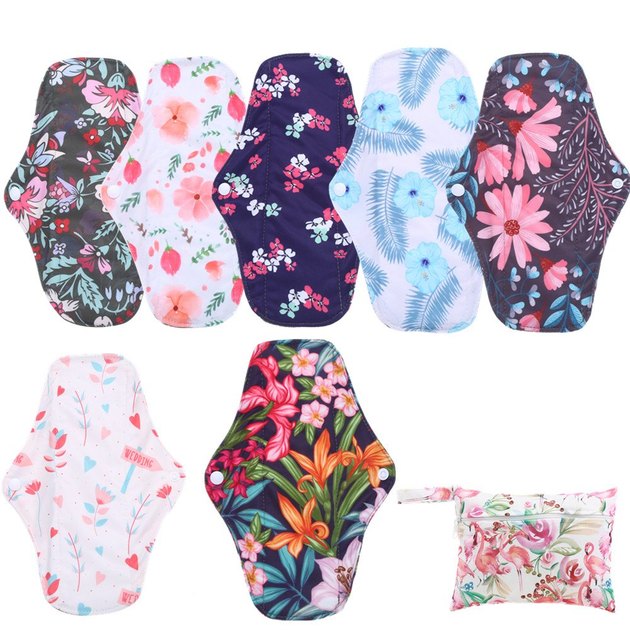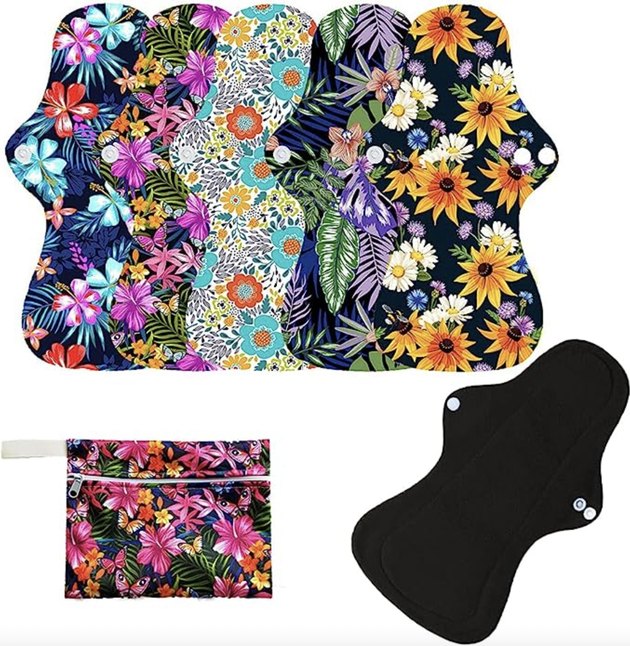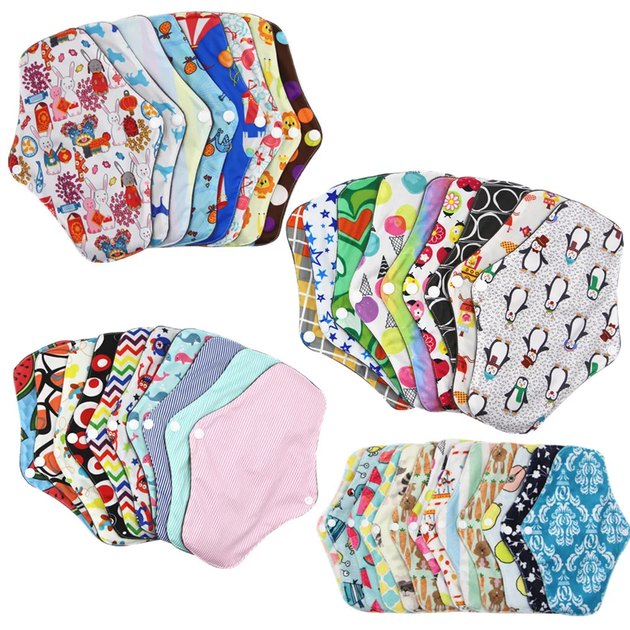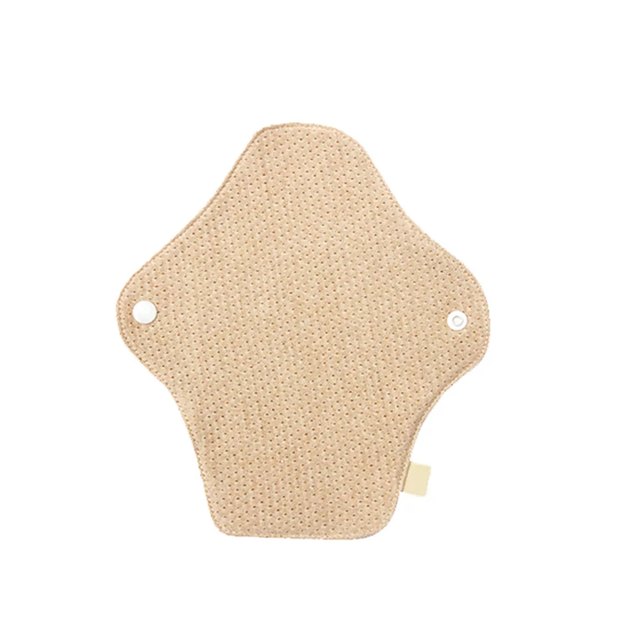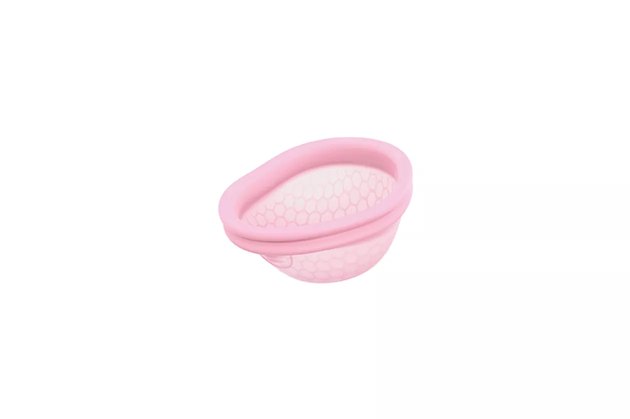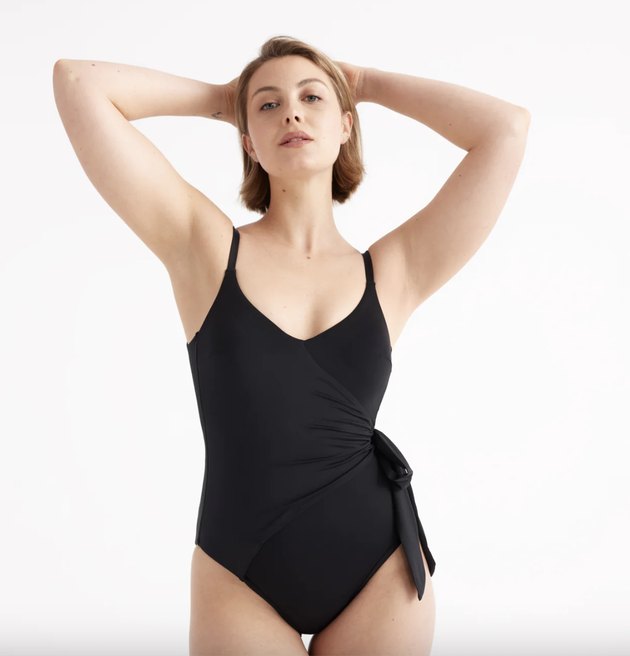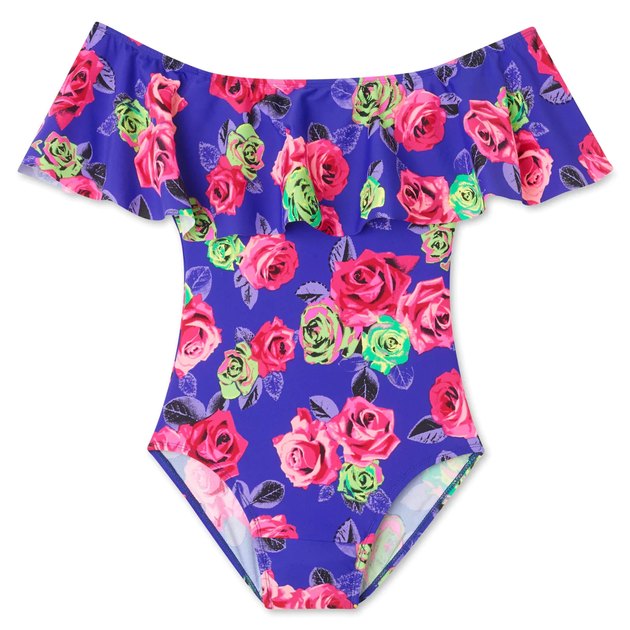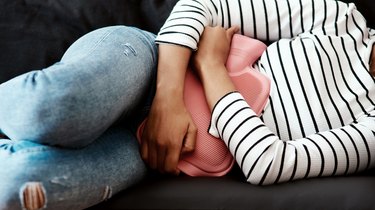
If you're a menstruating person, you know the trials and tribulations that come with your monthly flow. Beyond dealing with cramps, bloating and mood swings, certain activities are trickier to navigate, including swimming.
But if you're not comfortable inserting a tampon or menstrual cup, you can swim with a pad. The trick is to choose a waterproof period pad, which is specially made to be worn in the water (without puffing up to nearly four times its size).
Video of the Day
Video of the Day
Here's exactly how to swim with a pad, waterproof period pads to buy and answers to other frequently asked questions about wearing a pad in the pool.
How to Swim With a Pad
Here are some tips for how to swim with a pad during your period.
1. Get a Waterproof Period Pad
Regular, non-waterproof period pads can quickly fill with water and create a gel consistency similar to a diaper, explains Allison Rodgers, MD, an ob-gyn and reproductive endocrinologist with the Fertility Centers of Illinois.
"They can leak blood down your legs and get much bigger as they absorb water, making them obvious and uncomfortable," she adds.
That's why "waterproof" is a key element when searching for a pad to wear in the water on your period. (Jump to the best waterproof period pads to buy.)
2. Choose the Right Absorbency Level
Pads come in varying levels of absorbency — most often light, moderate, heavy and super. The pad absorbency level that's right for you might depend on the nature of your flow, as well as where you are in your cycle.
For example, if you're on day one or two, you'll likely have a much heavier flow and require a heavy or super pad versus on day five or six when you can get away with a light or moderate pad.
3. Wear Swimwear That Fits Well
To make sure your pad stays in place — since the water can compromise its ability to stick to your clothing — it's a good idea to wear swimwear that is well-fitted. If it's loose, the pad may show or even come out in the water.
4. Have an Extra Pad on Hand
Should you have a very heavy flow, it's a good idea to have an extra waterproof pad on hand for the days when you know you'll be spending a significant amount of time swimming. This can not only help prevent any leakage, but also ensure that you're comfortable.
5. Bring Backup
Dr. Rodgers recommends bringing backup, whether it's a tampon or a menstrual cup or disc, in case you're not comfortable in your waterproof pad.
She also suggests carrying a change of clothes while you're on your period — no matter where you're going or what you're doing. This may simply make you feel more comfortable should you have any leakage.
4 Waterproof Period Pads to Try
1. Simfamily Reusable Waterproof Bamboo Charcoal Menstrual Pads
This set of six waterproof pads are reusable, so your $14 really goes a long way. They come in varying absorbency levels, including panty liner, regular and heavy flow.
To clean them, simply soak them in cold water or use the presoak function on your washing machine to remove all of the menstrual blood from the bamboo fabric. You can then wash them on cold using a natural detergent and tumble dry on low.
2. MissC2C Resuable Waterproof Menstrual Pad Set
This set is very similar to the brand above, with fun flower prints on each of the reusable, waterproof pads.
They come in the same levels of absorbency and are made with two layers — one that is charcoal fabric and one waterproof layer. The charcoal layer helps prevent odor, as well as the build up of excess moisture and bacteria, while the waterproof layer helps keep water from filling up the pad.
3. Walbest 1pc Bamboo Charcoal Fiber Waterproof Menstrual Period Pad
This package only comes with one waterproof menstrual pad, so it's a good purchase if you're just looking to see what the experience is all about.
This pad is made from a bamboo charcoal fiber inner layer and contains two middle layers made from microfiber fabric. The bamboo charcoal provides an antibacterial effect and also serves as a natural deodorant to keep you feeling and smelling fresh.
4. Color Random Women Reusable Cotton Menstrual Pads
If you're looking for a non-toxic waterproof period pad, this is a great buy.
It's made from a skin-friendly fabric that does not contain harmful chemicals. It's breathable, lightweight and won't puff up while you're swimming.
It's also washable — either by hand or washing machine.
Other Products You Can Use to Swim on Your Period
Pads aren't the only way to prevent leaks when you're in the water. Here are other period products that offer absorbency when you're swimming:
1. Tampons
Not everyone is comfortable wearing a tampon, which is totally fine. But if you want to use one for swimming, a tampon can be worn discreetly and help prevent any leaks in the water. (Note: Any tampon can work for swimming; because it's worn inside the body, you don't need a "waterproof" product in this case.)
Just make sure you choose the right absorbency level (i.e. light, medium or heavy) for your flow and take a moment to learn how to insert it correctly.
2. Menstrual Disc or Cup
There can be a learning curve when it comes to inserting a menstrual disc or cup, but like tampons, these can be worn discreetly under a bathing suit and prevent period leaks when you're in the water.
3. Period Swimwear
Instead of wearing a menstrual pad under your bathing suit, consider investing in "period swimwear," aka bathing suits designed to be worn during your period.
Brands such as Knix and Ruby Love now make absorbent, leak-free bikini bottoms, shorts and one-piece suits. Here are a few options:
FAQ
1. Are Period Pads Meant for Use in Water Hygienic?
Most water in a pool has chlorine, which will disinfect any blood that enters a pool.
Even in natural bodies of water, such as a lake or the ocean, Dr. Rodgers points out that there is so much water that a small amount of blood will not contaminate it or pose a health risk to others.
2. Can Swimming With Your Period (Even With a Waterproof Pad) Attract Sharks?
It shouldn't, but if it is leaking out, it's not entirely impossible, according to Dr. Rodgers.
"Sharks are more afraid of humans than we realize — most sharks aren't hunting humans like in the movies," she says. "It would be very unlikely for a shark to attack you because you're on your period unless you are in shark-infested waters, which you shouldn't really swim in anyway."
3. Will You Leave a Bloody Trail in the Water?
It's possible, but you can avoid that by choosing the right waterproof pad, wearing snug-fitting swimwear and changing your pad often if you're in the water for long periods of time.
4. Will Everyone Know You Have Your Period?
Again, the key here is to choose the right swimwear and pad combination. By wearing a waterproof pad when you swim, you'll avoid the puffed-up look of a regular pad and greatly lower the chance of blood leaking into the water or down your legs.
If you're still not totally comfortable swimming with a pad, consider using a tampon or a menstrual disc or cup.
Is this an emergency? If you are experiencing serious medical symptoms, please see the National Library of Medicine’s list of signs you need emergency medical attention or call 911.
